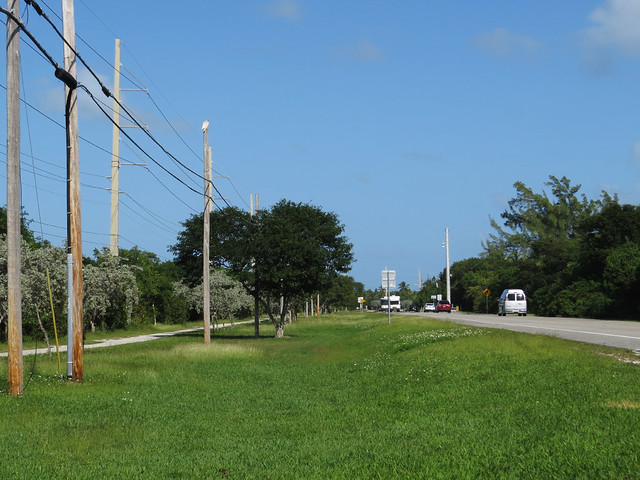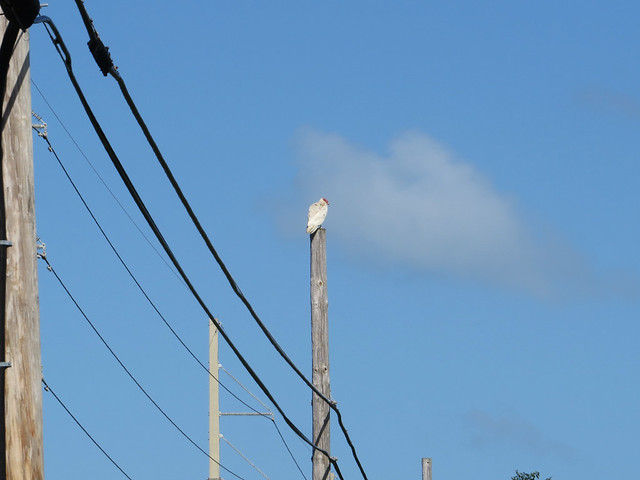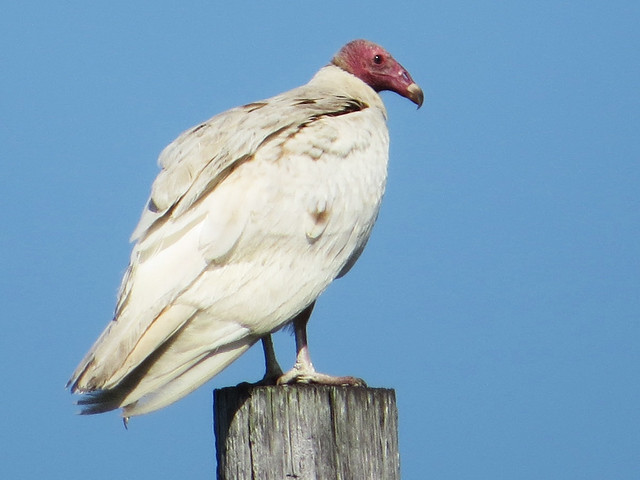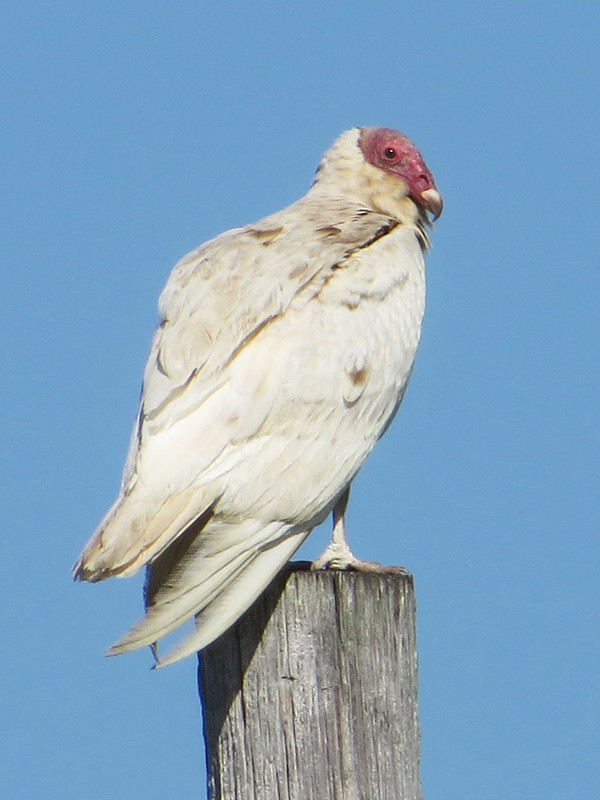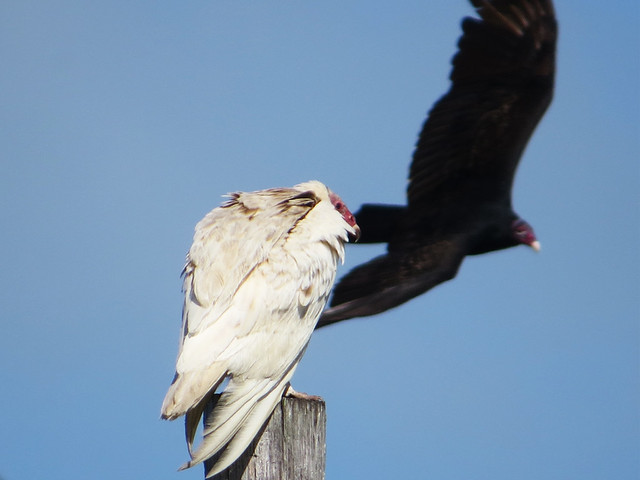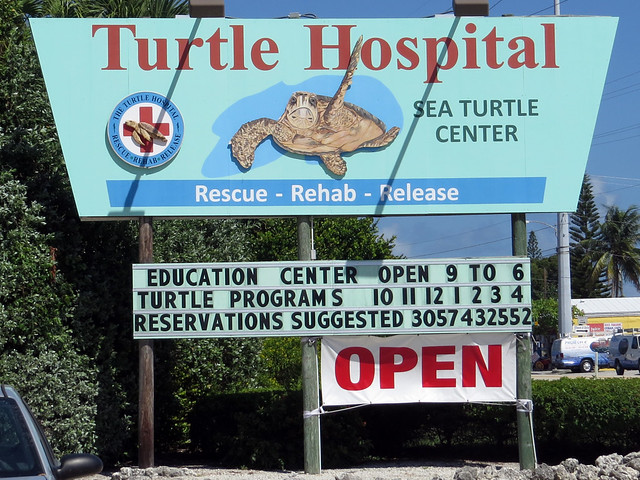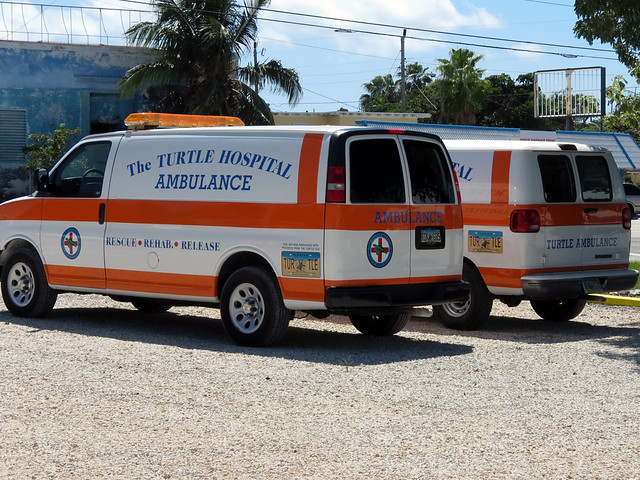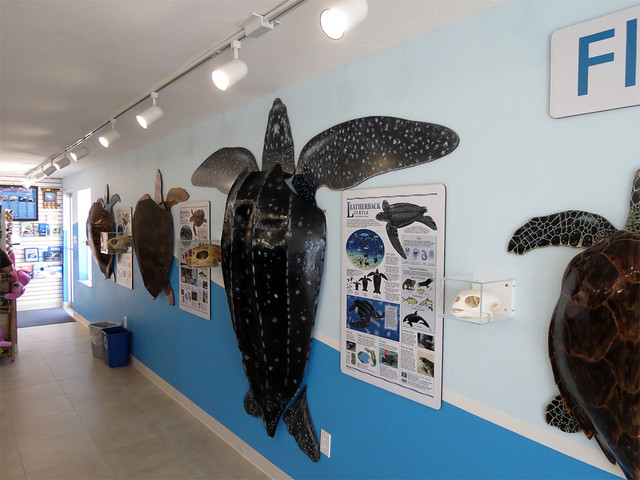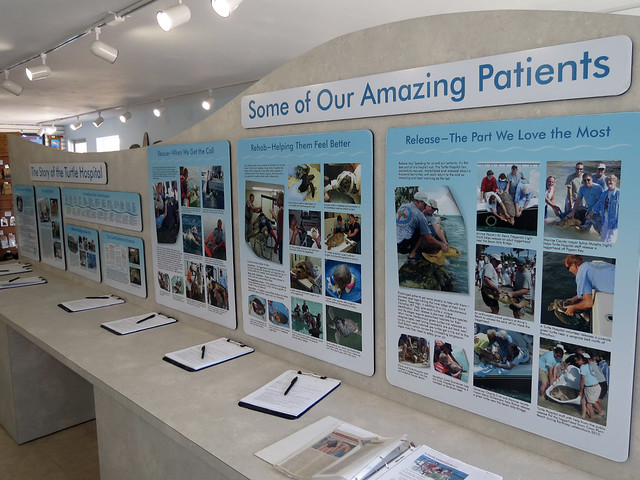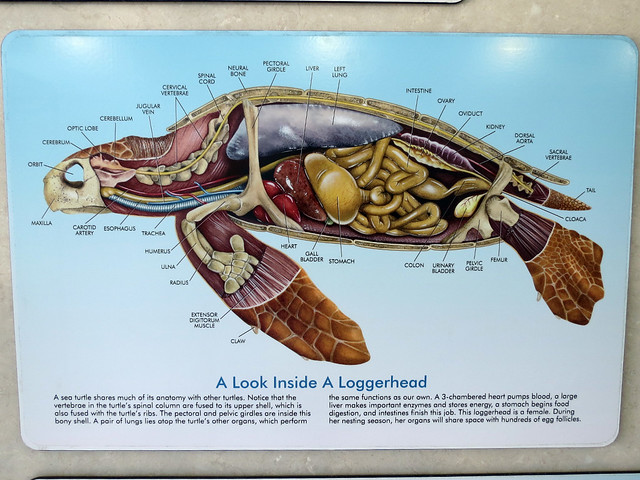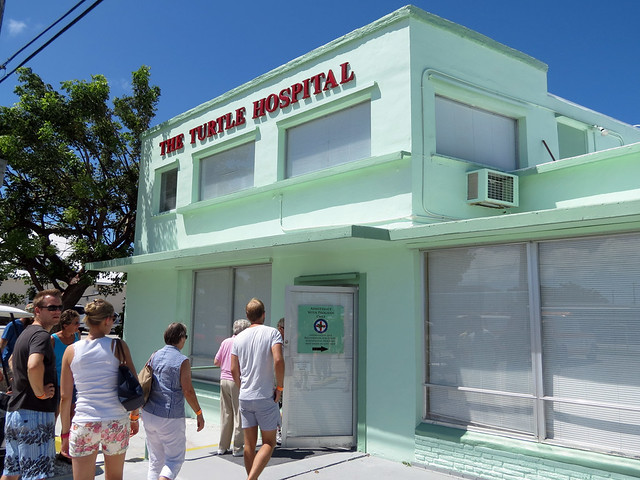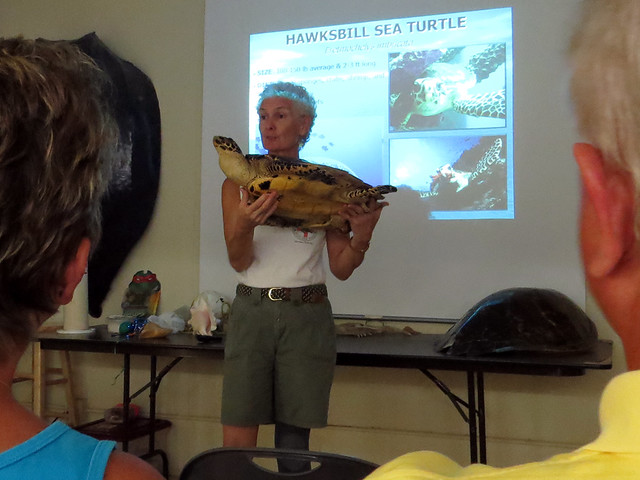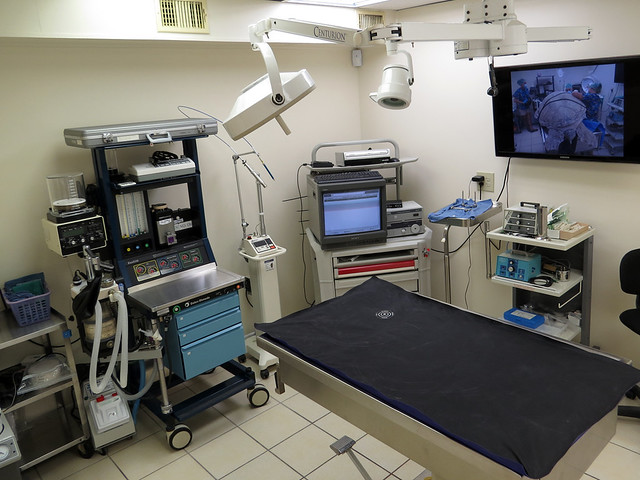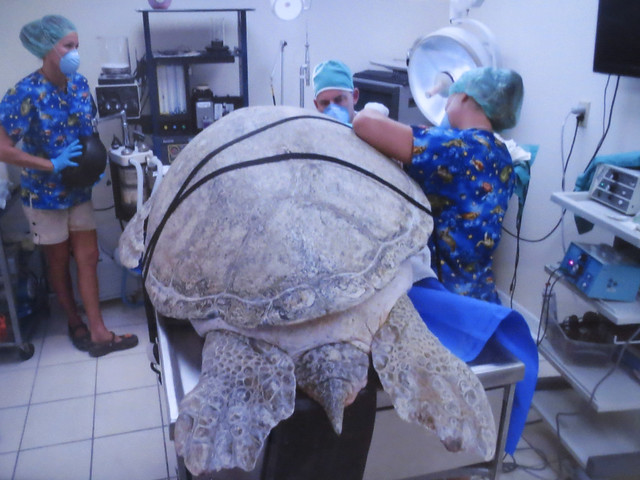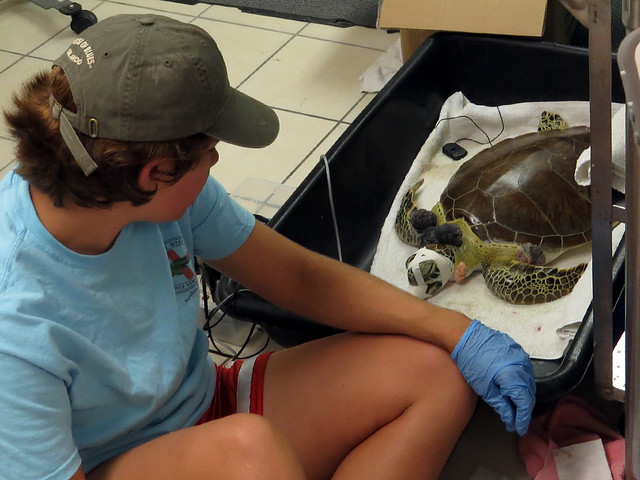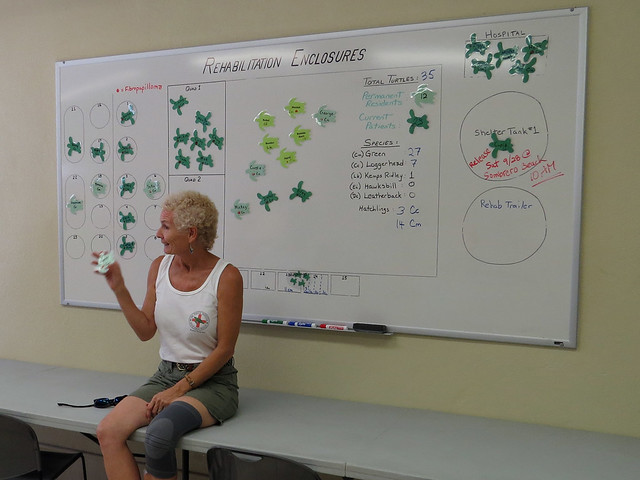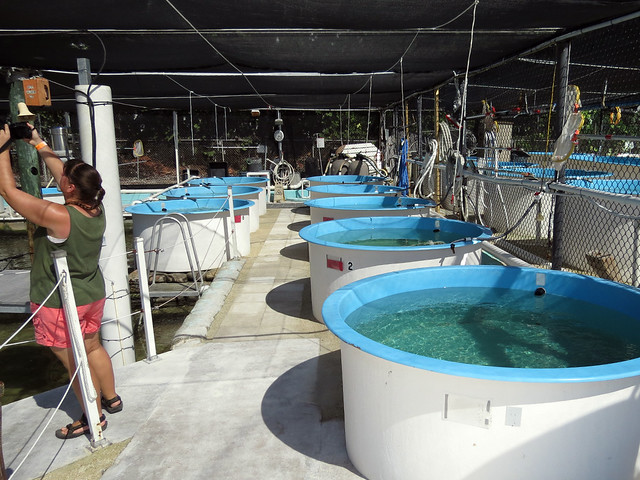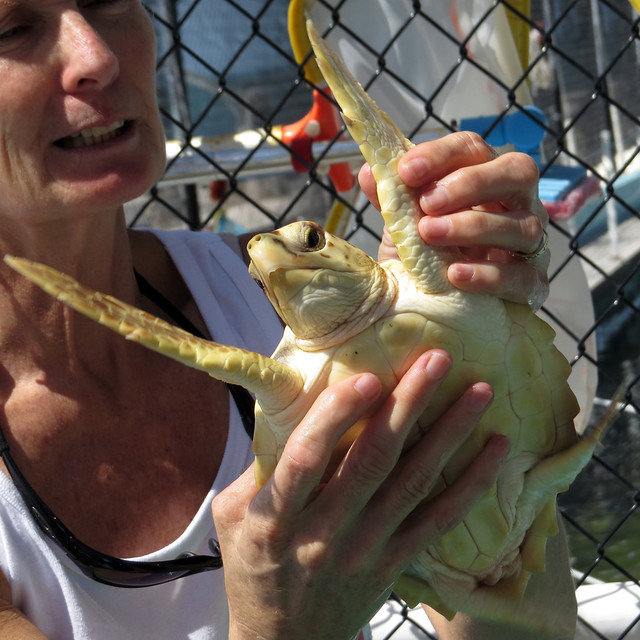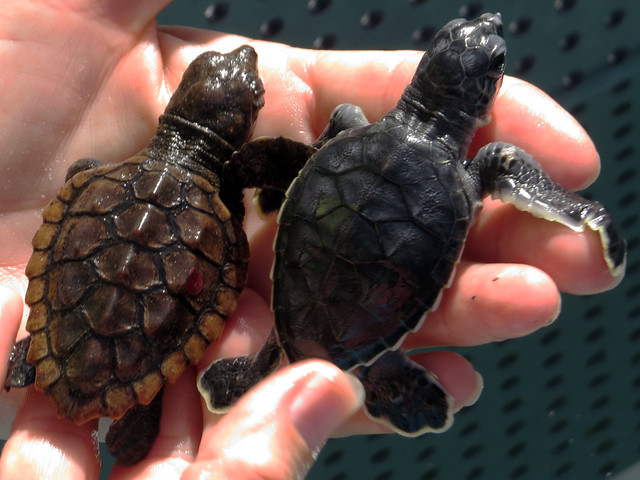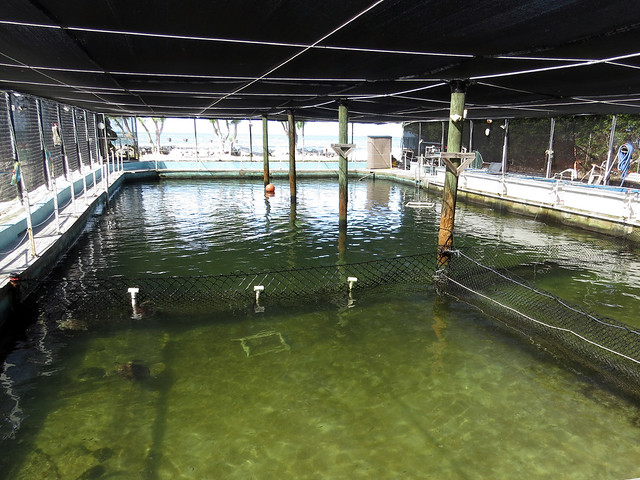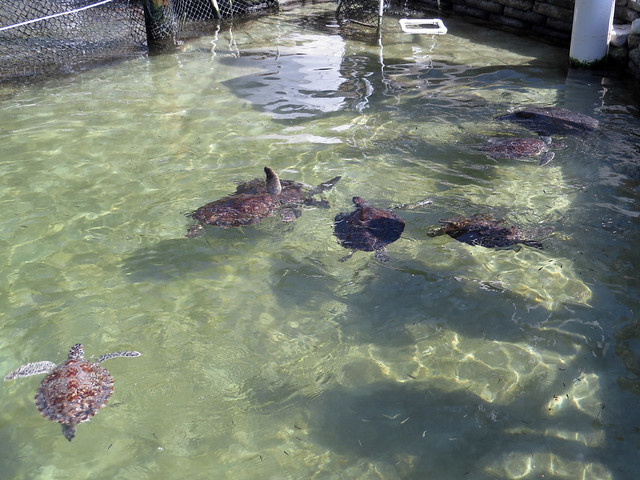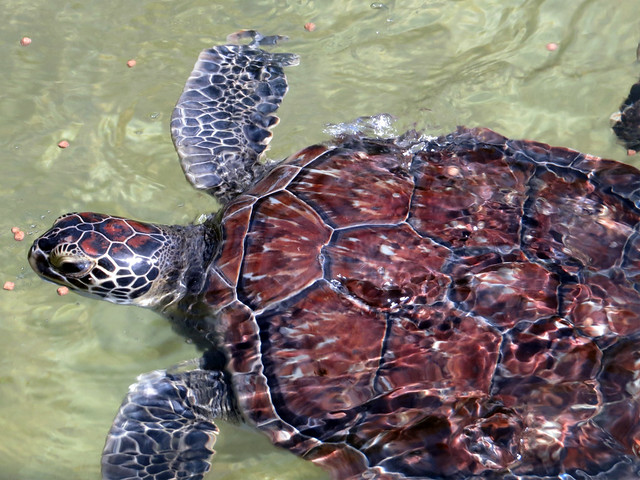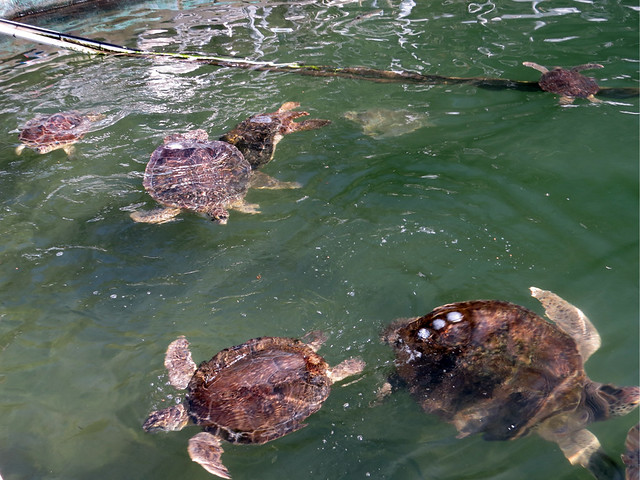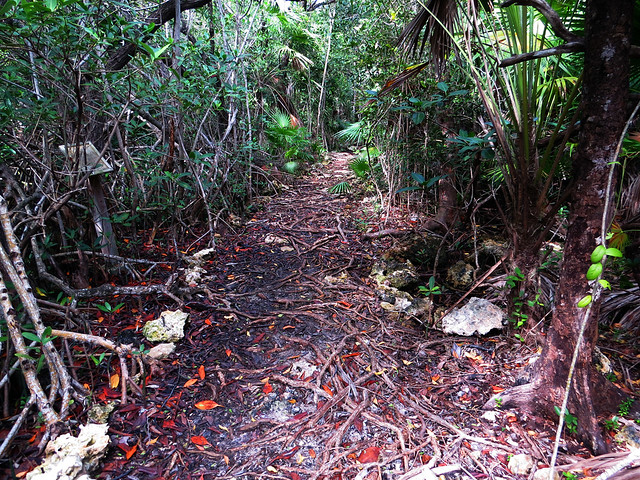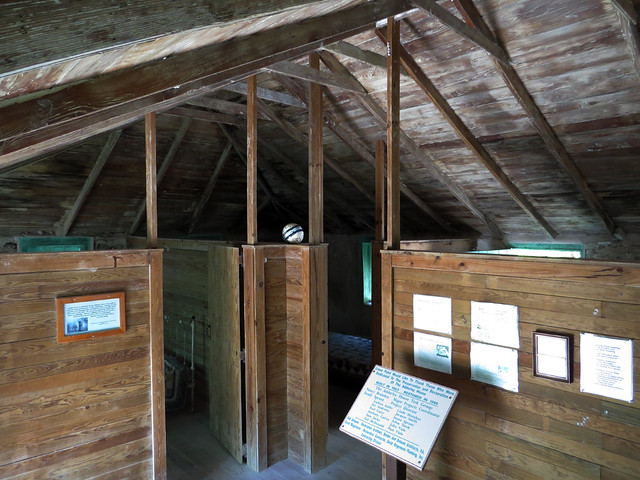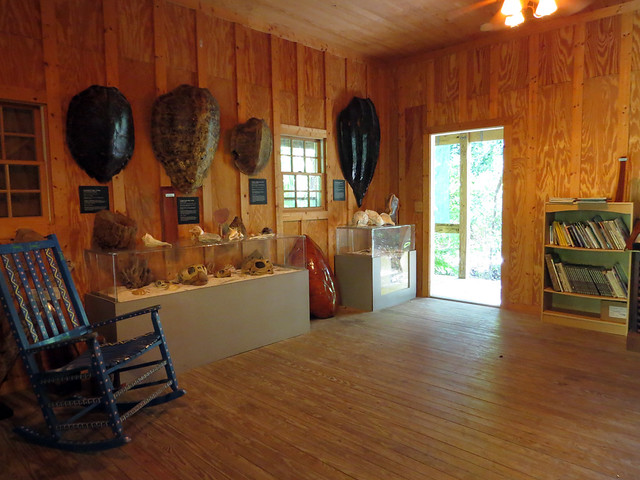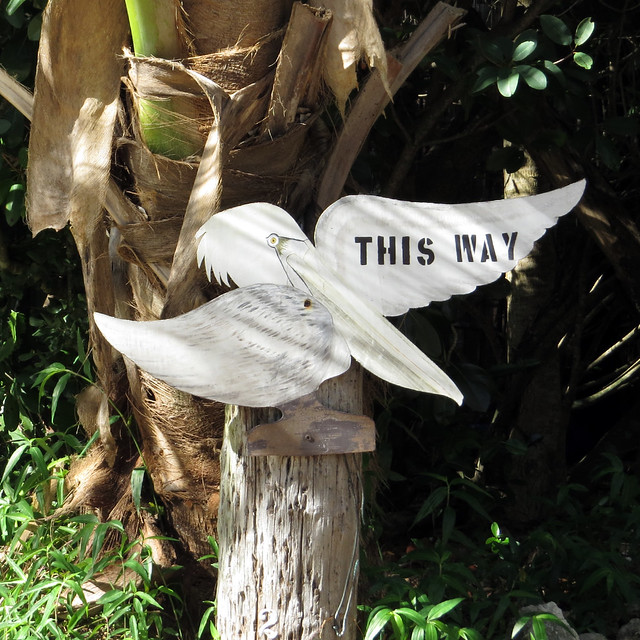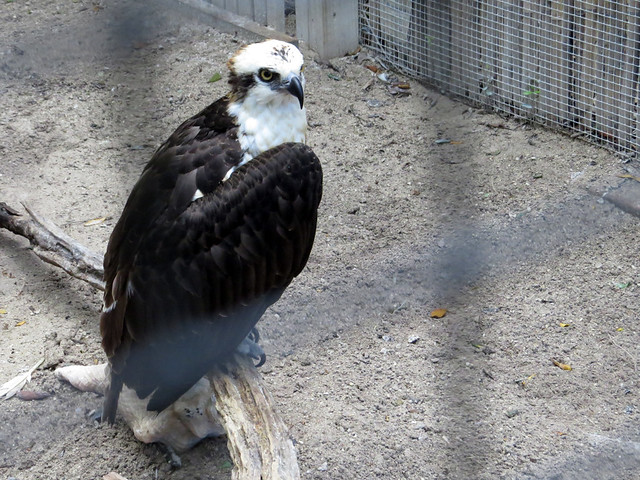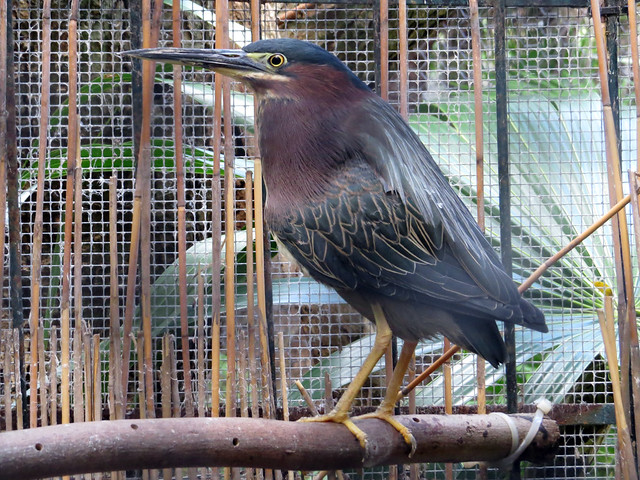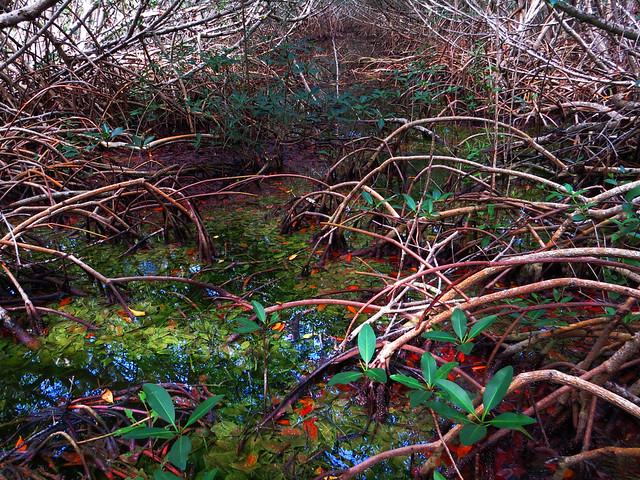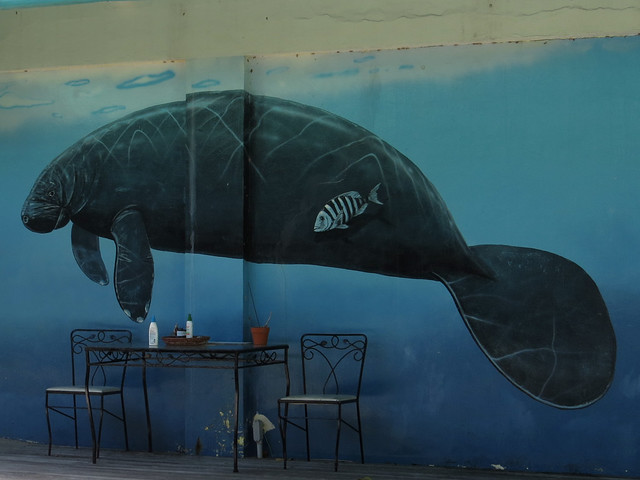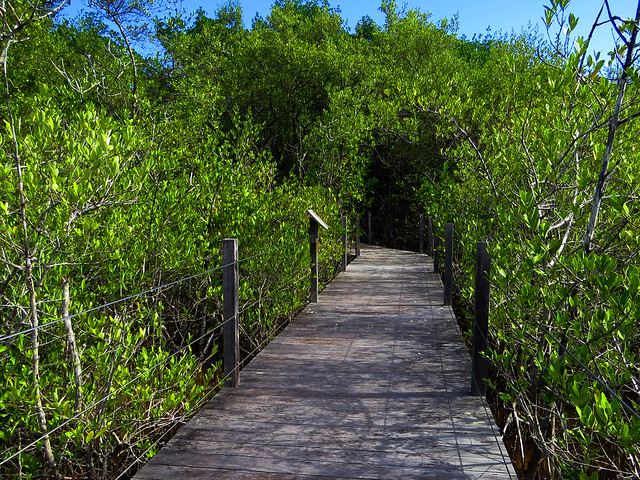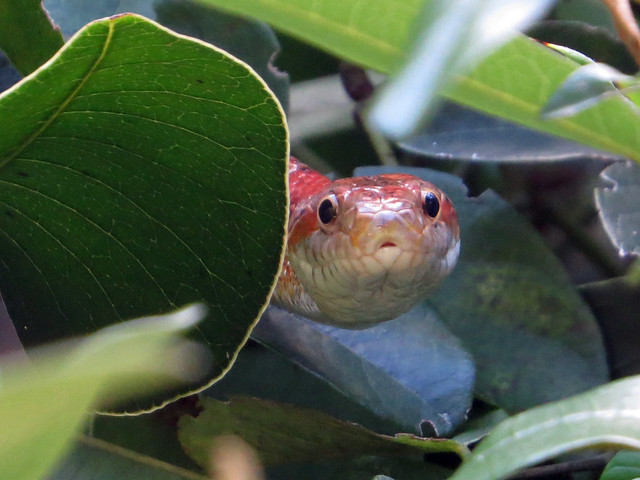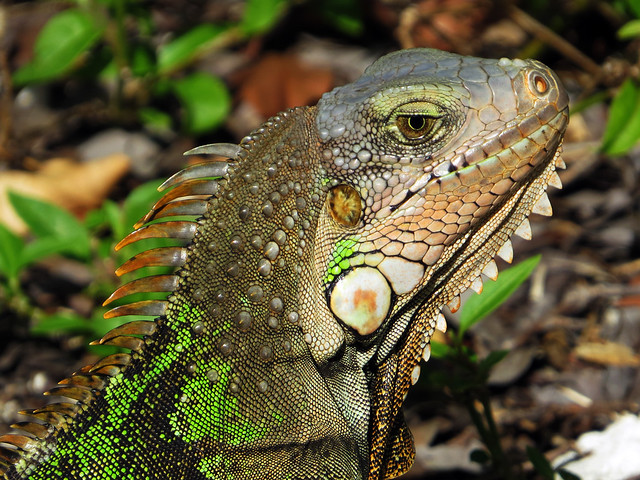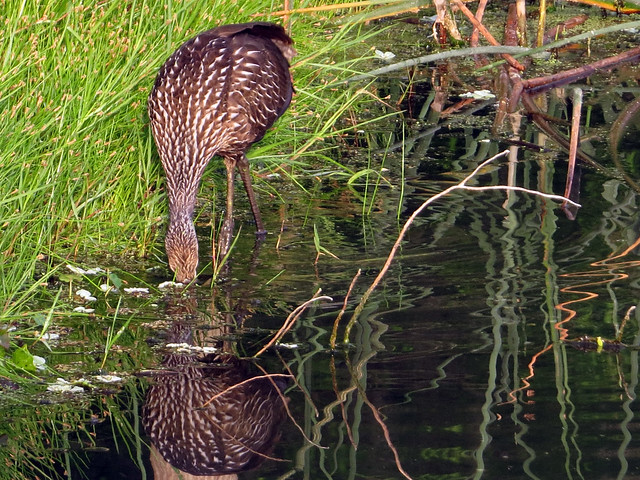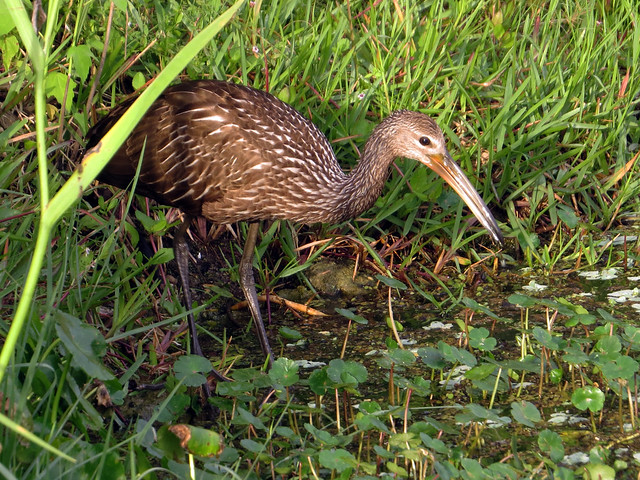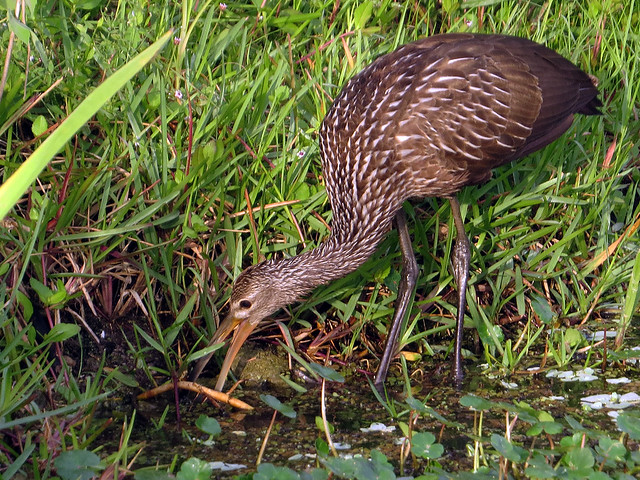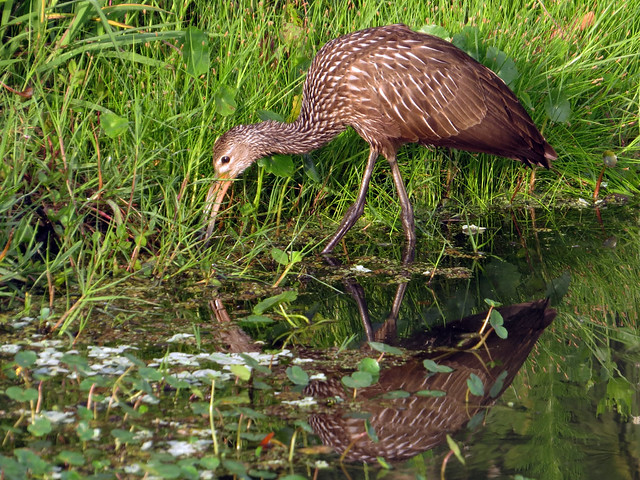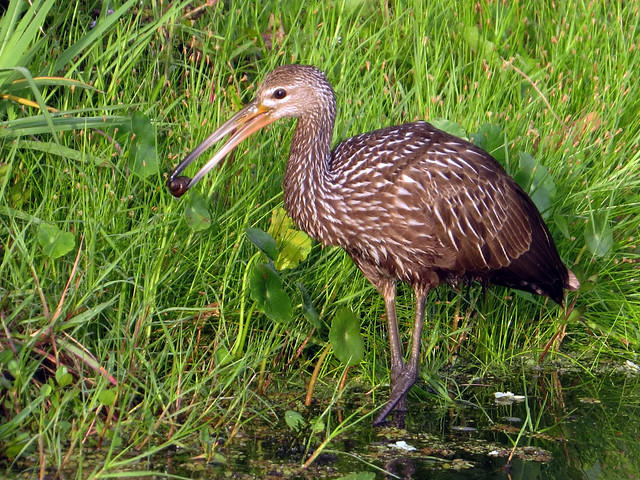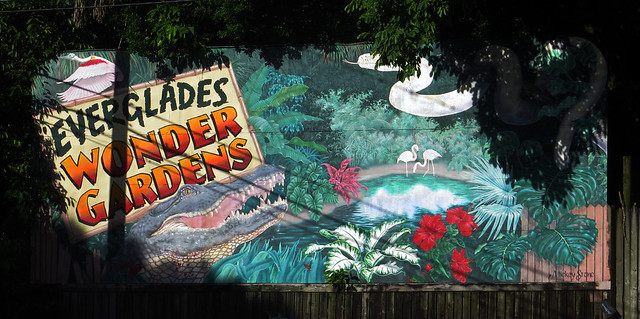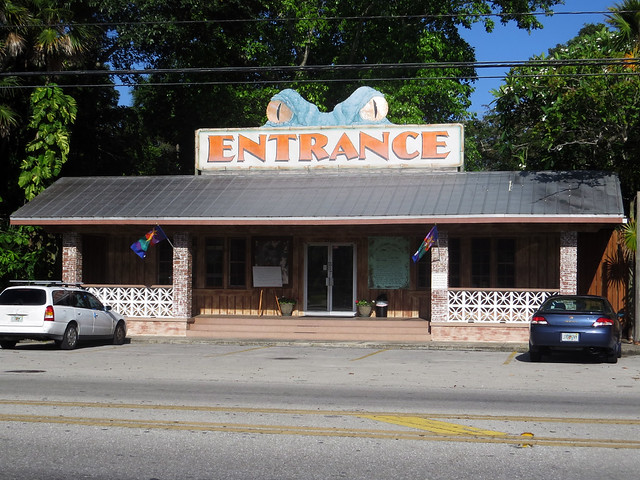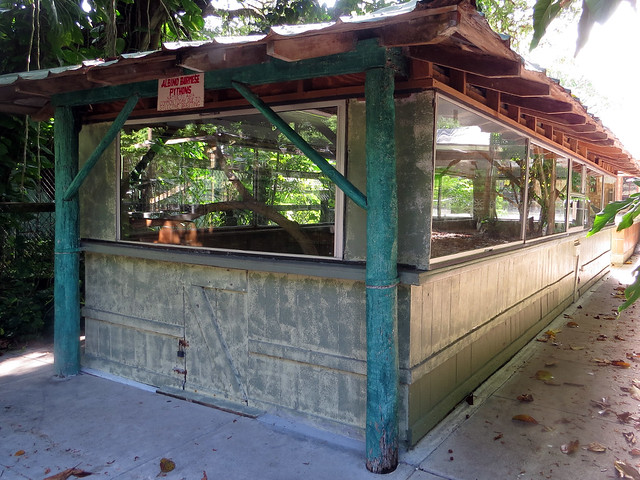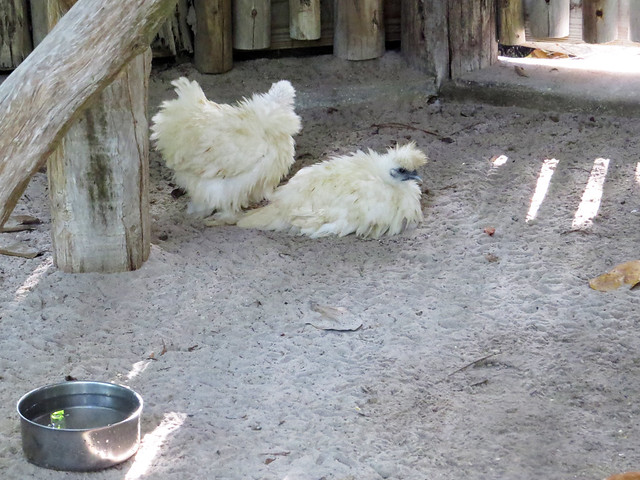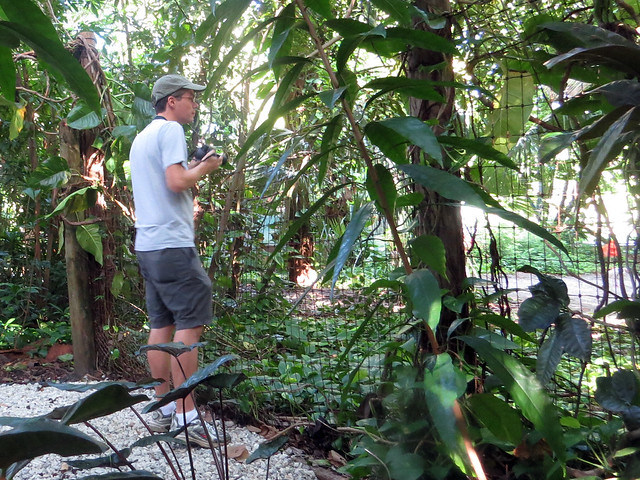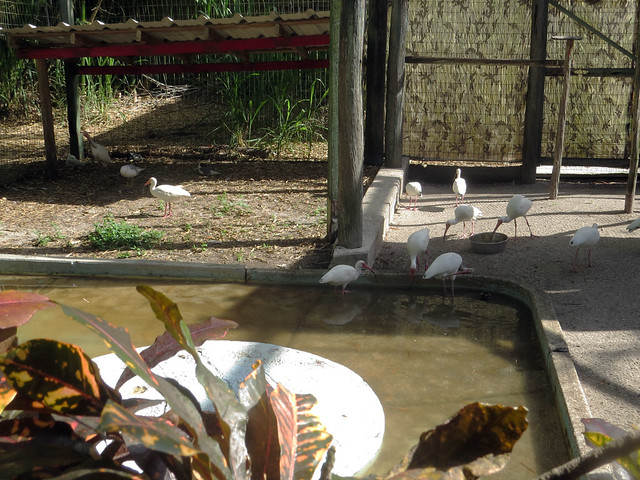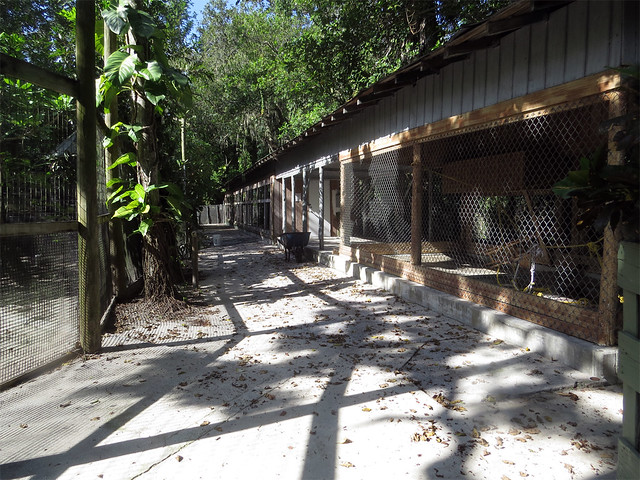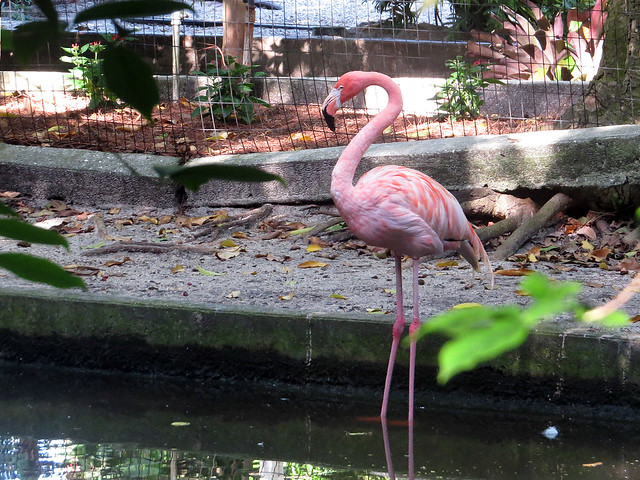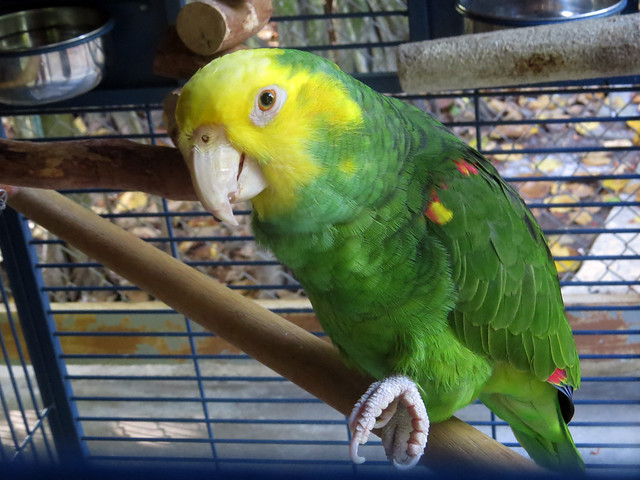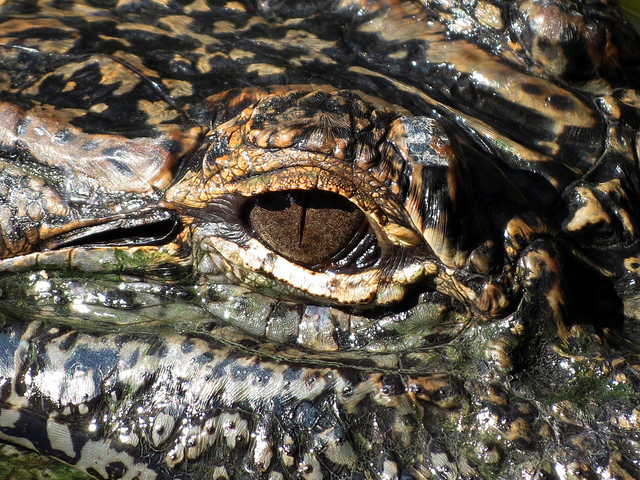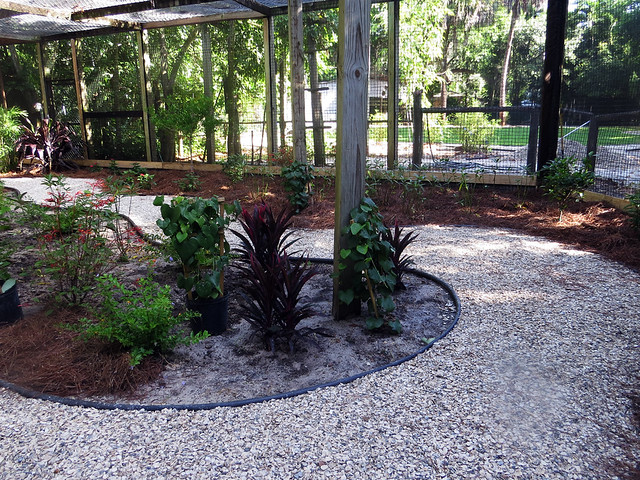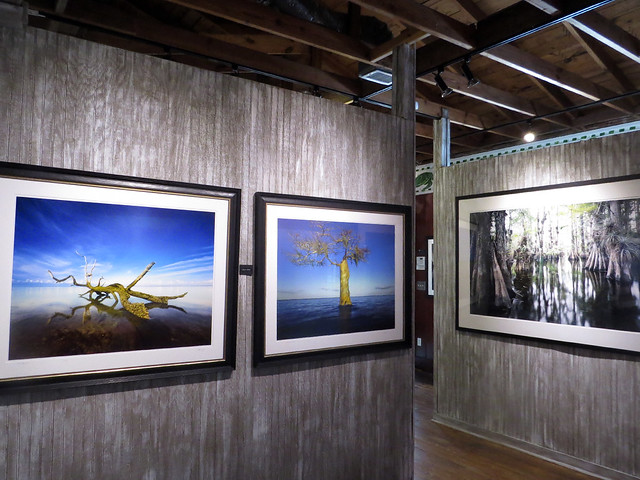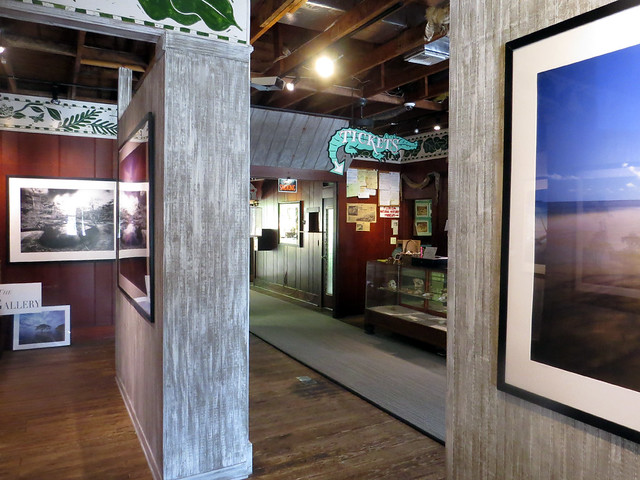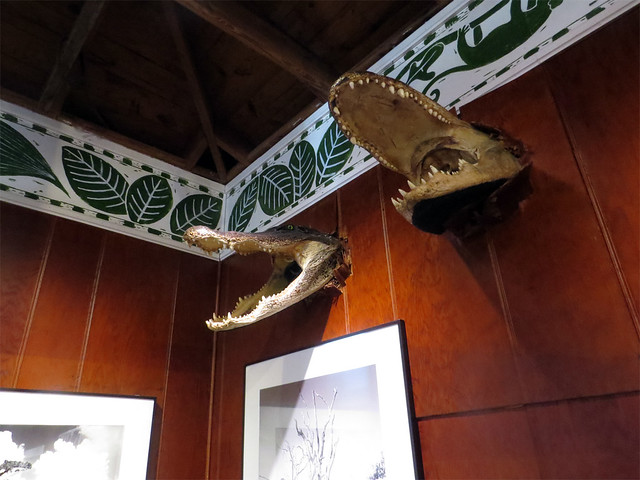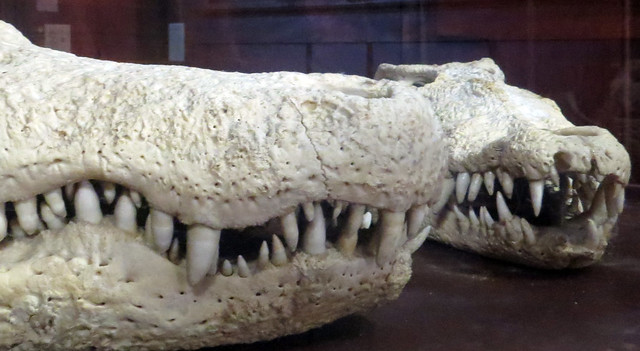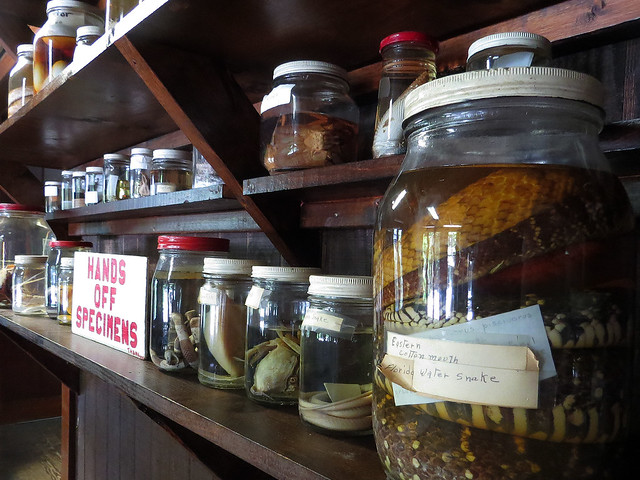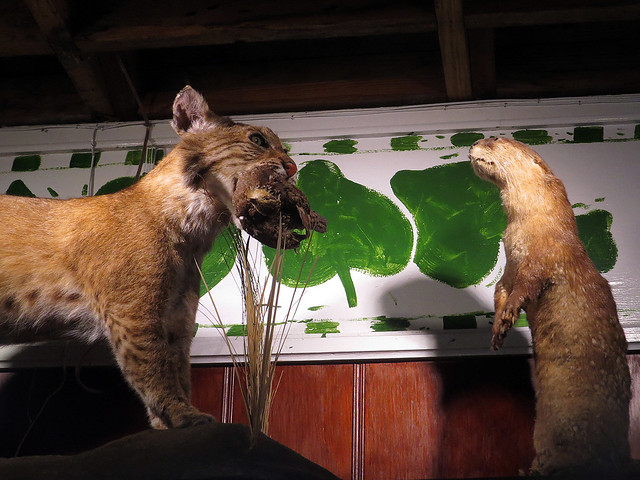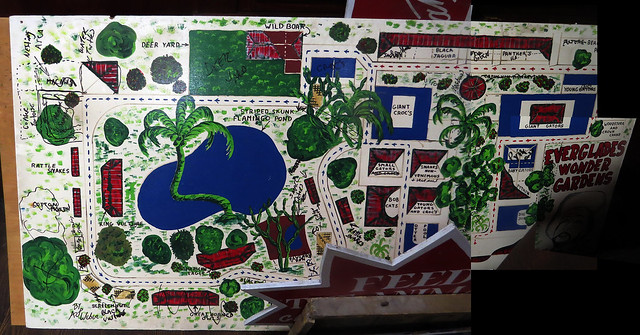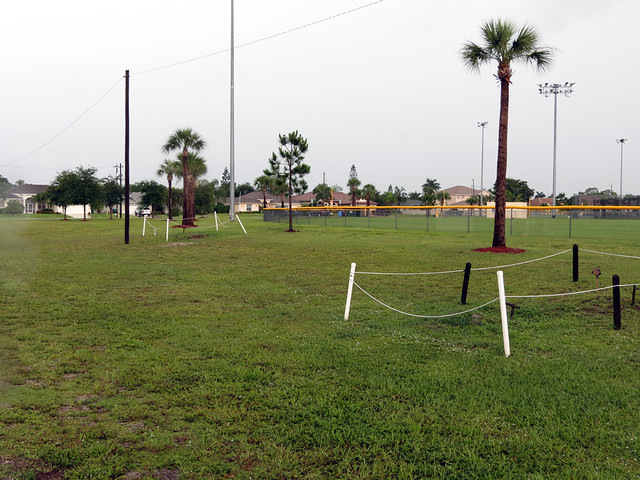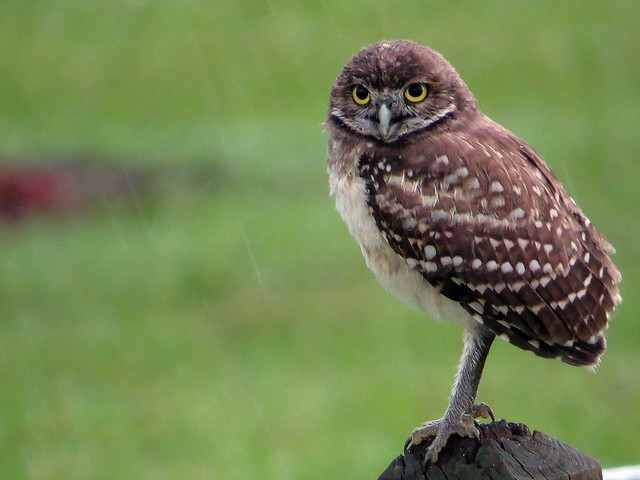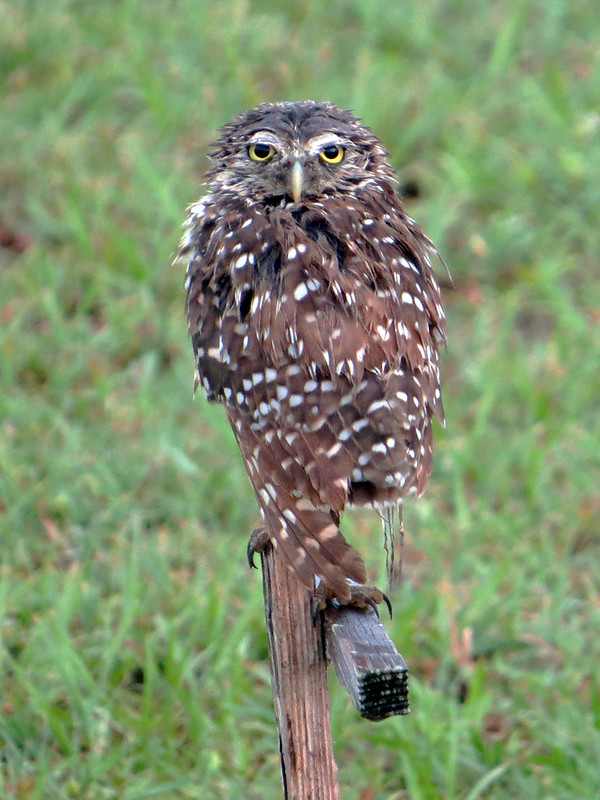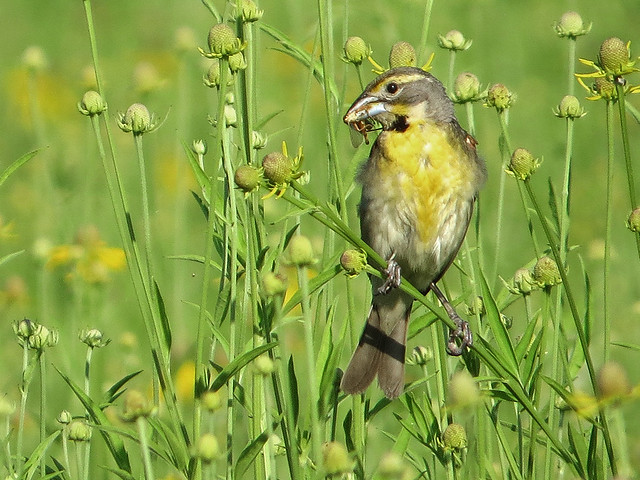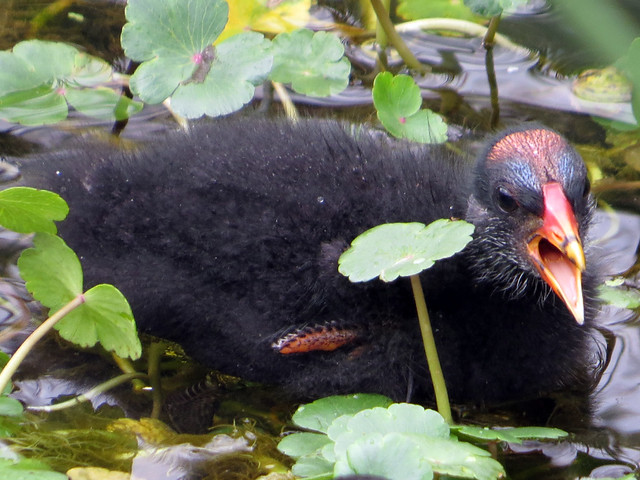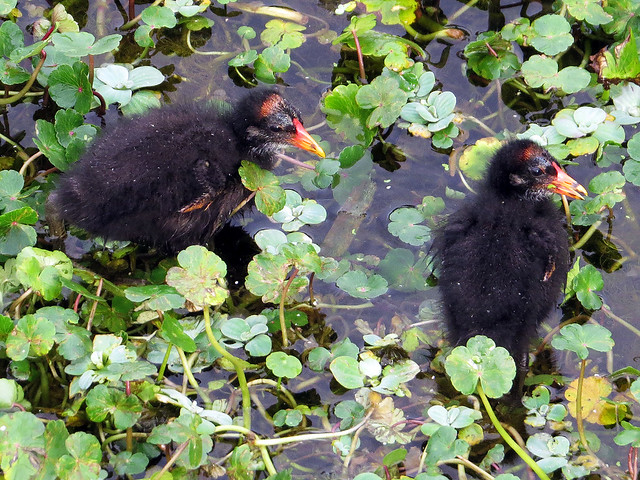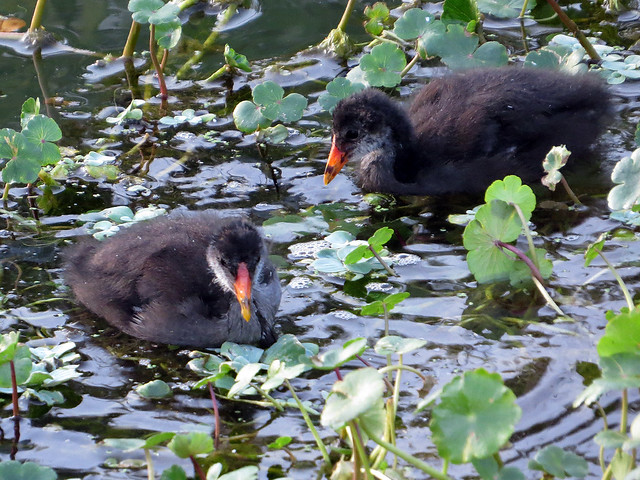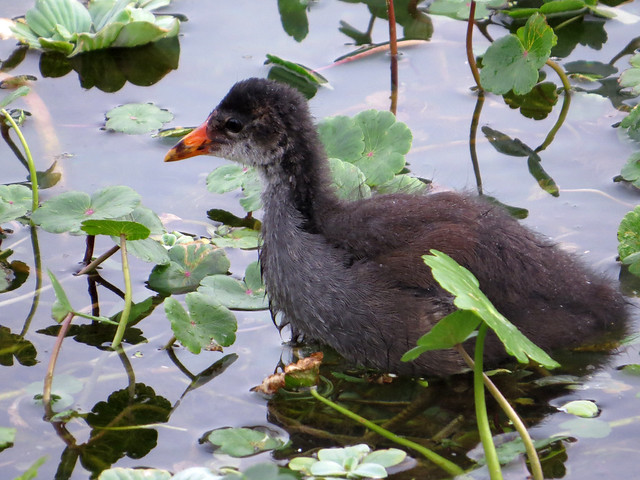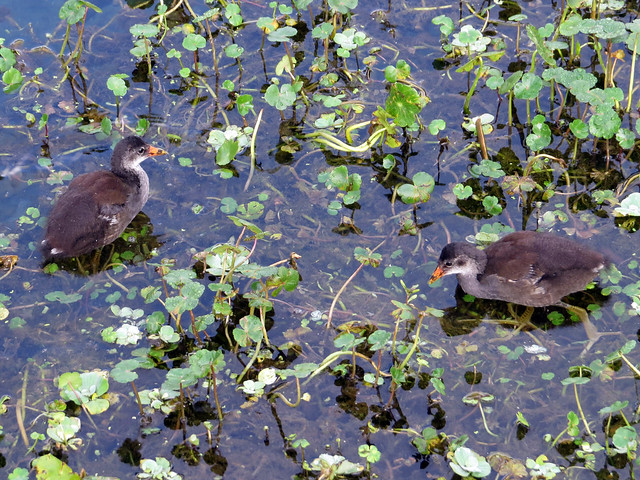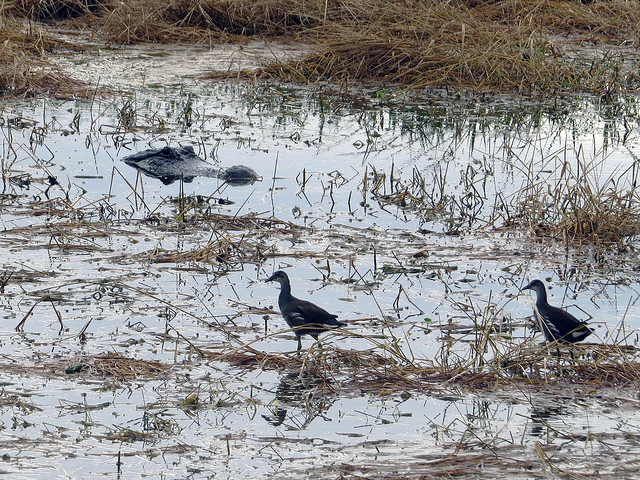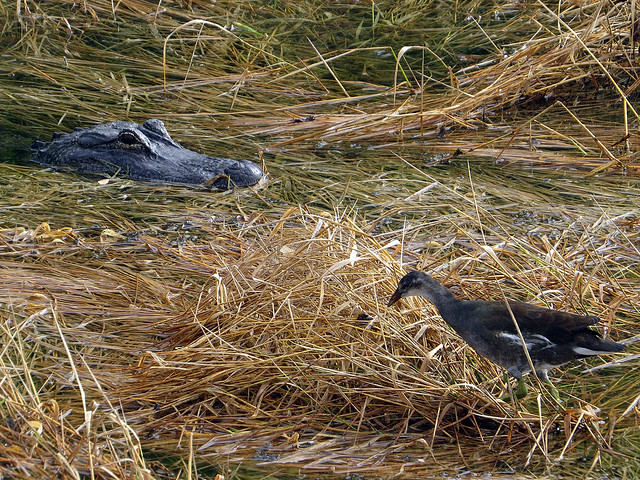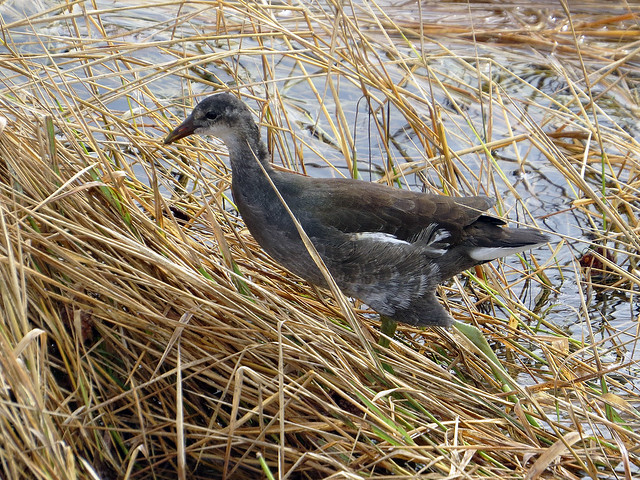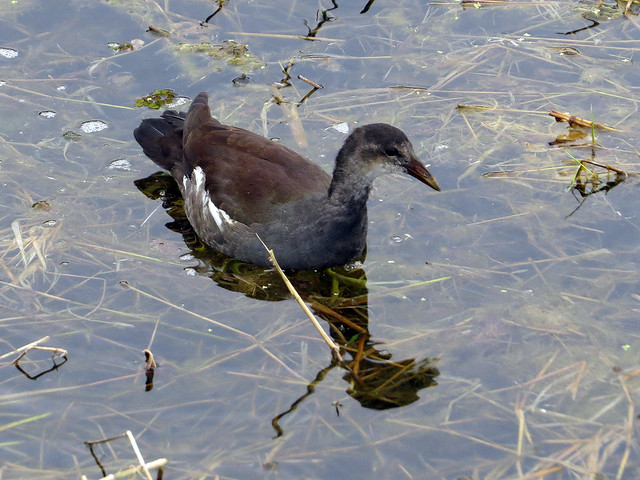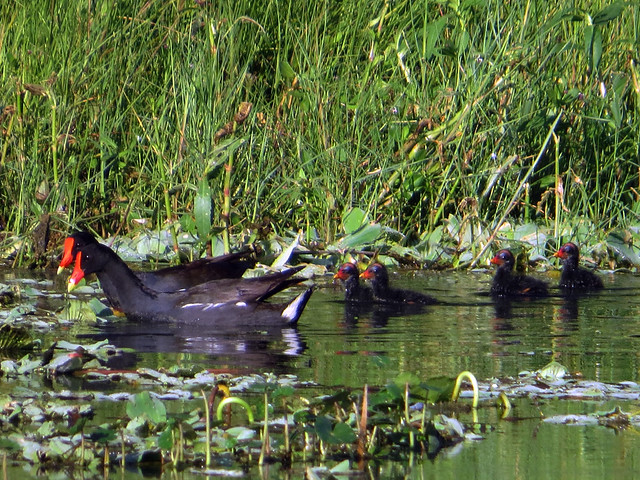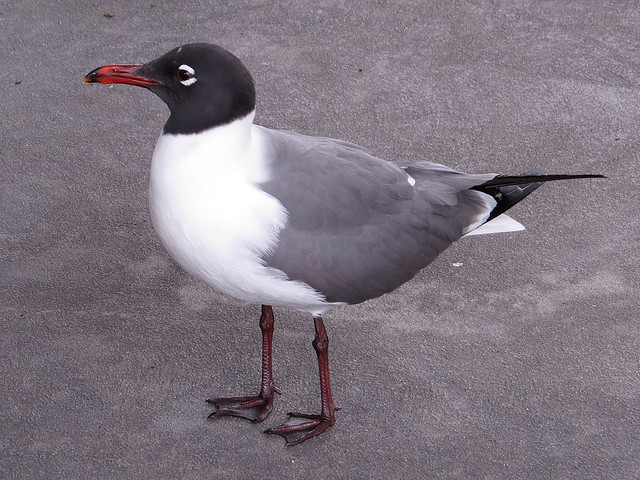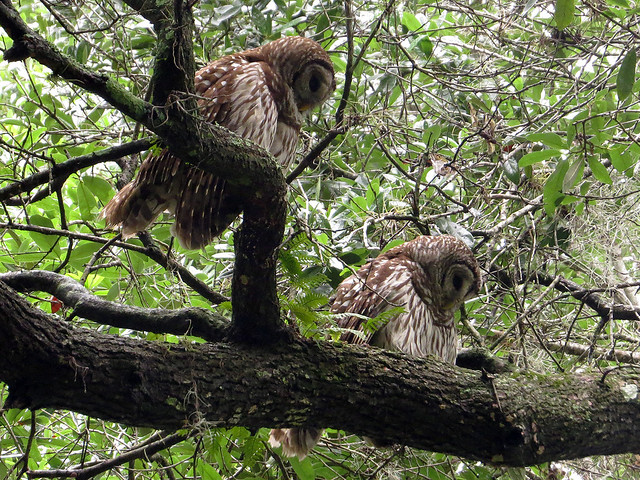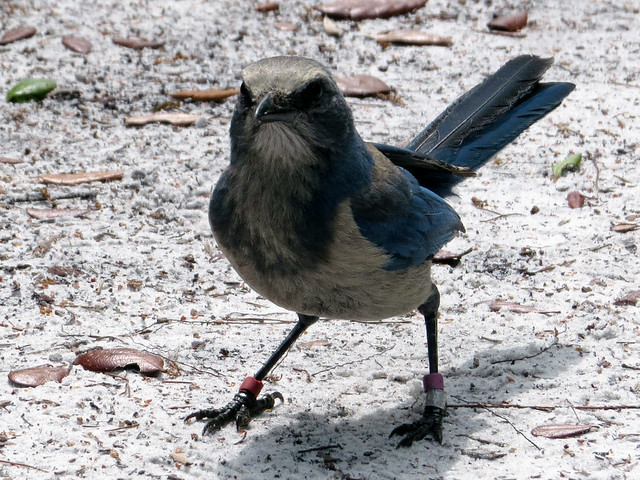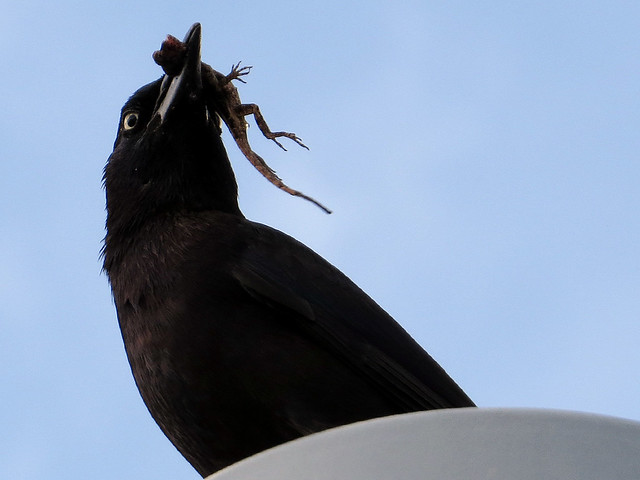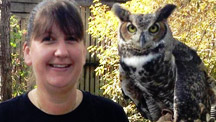While Arthur’s parents visited us earlier this year, Arthur went to one of his regular volunteer days at the Marine Science Center (MSC) in Ponce Inlet. All four of us drove to the sea and while Arthur did turtle work, I went to Lighthouse Point Park with my in-laws. It was May 1st.
We had lunch and then we walked out on the jetty and had a look around. Here’s a look back at the beach patrol tower from the jetty.

Lighthouse Point Park, photo by Ineke de Wolf
About 40 minutes later, we were walking back and I saw a large mass on the beach, about halfway between the tower and the waterline in the above photo. I started running, because I thought it might be a sea turtle. It was a beached Loggerhead. It had beached during the short time we were on the jetty.
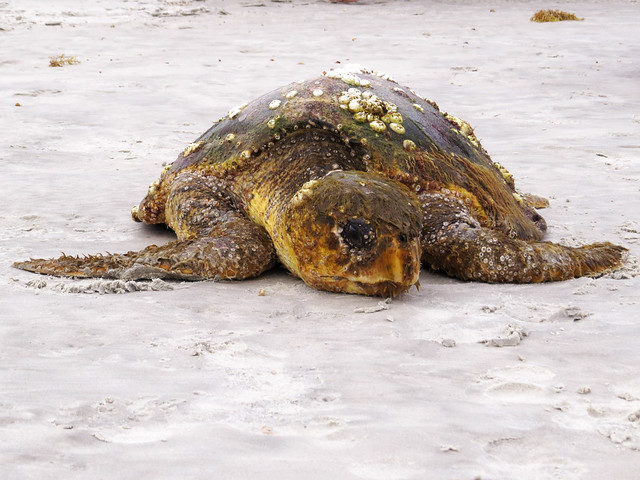
Beached Loggerhead 
I immediately called the Marine Science Center to let them know there was a turtle that needed to be rescued. Meanwhile, a beach patrol officer pulled up on a buggy and carried the turtle out of the waterline so it would not be washed back to sea. A beached turtle is always in trouble and should not be put back to sea without being examined first. We waited for turtle experts from MSC to arrive.

Beach Patrol carries the sea turtle to safe location, photo by Ineke de Wolf
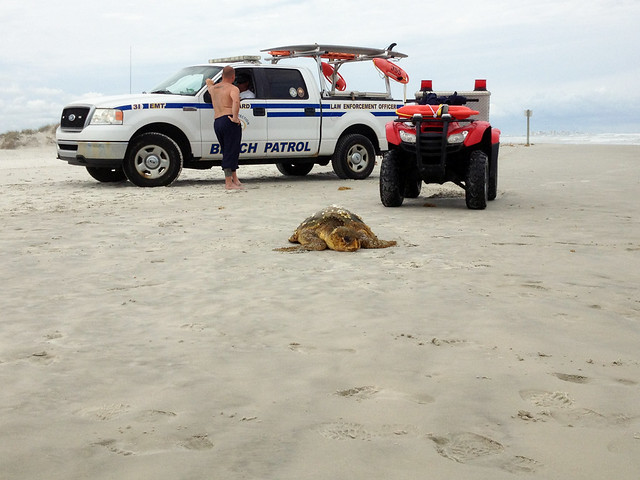
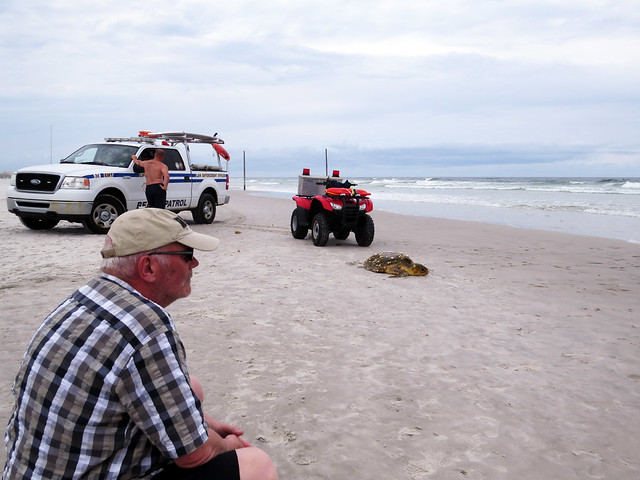
My father-in-law, Ben, waits for MSC staff to arrive
When MSC staff arrived, they evaluated the turtle. They realized they needed a larger vehicle to transport the turtle, which weighed in at over 100 pounds. We waited some more. A small crowd gathered.
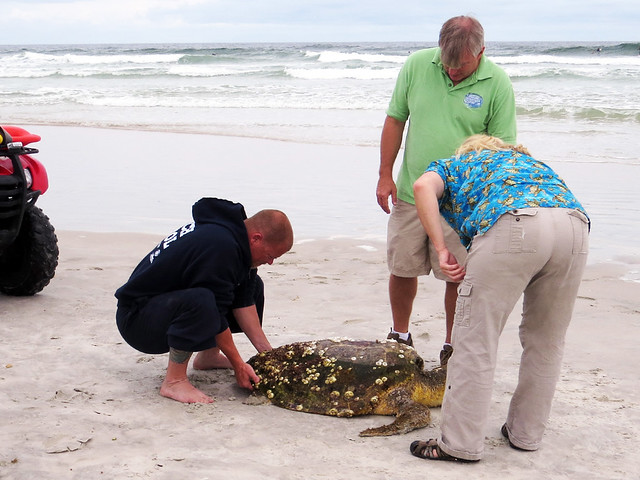
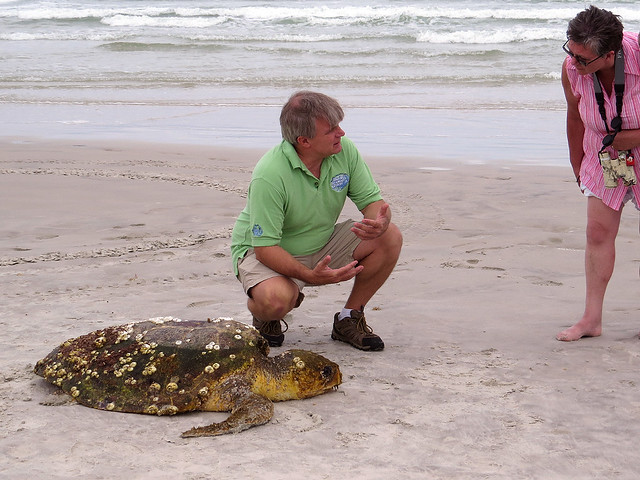
My mother-in-law, Ineke, speaking with MSC staff

With the right vehicle, the turtle was carried off and brought to MSC for examination and rehabilitation.
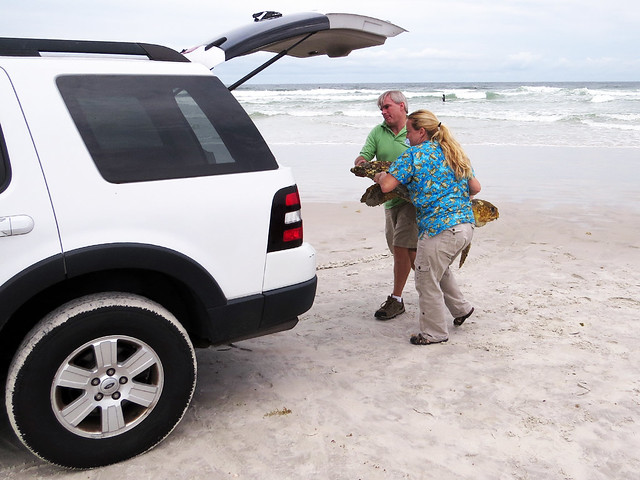
The Loggerhead was examined and given care. It was underweight and weak but had no major injuries. The cause of its beaching and ill health was unknown. The size of the turtle made sexing difficult, though I will now refer to it as she. She was given the name Zee, the Dutch word for sea and a shortened form of Zeeschildpad, the Dutch word for sea turtle, in honor of Arthur’s Dutch family.

Info sign about Zee for MSC guests, photo by Arthur de Wolf
Rehabilitating turtles at MSC are kept in large saltwater tanks like the ones pictured below. These were taken earlier and do not show Zee.
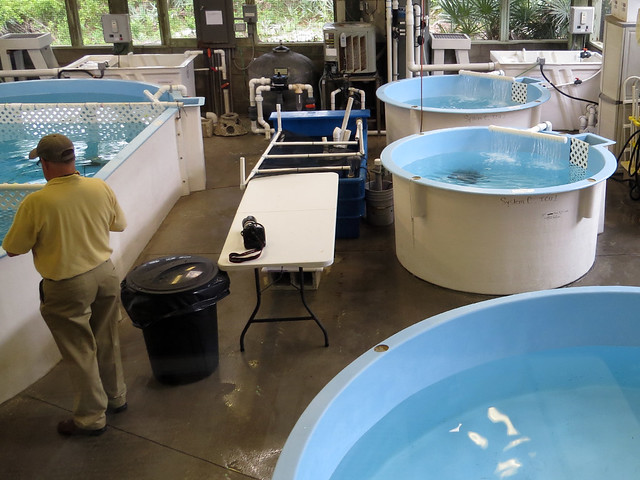
Rehab tanks at MSC (prior to Zee’s arrival)
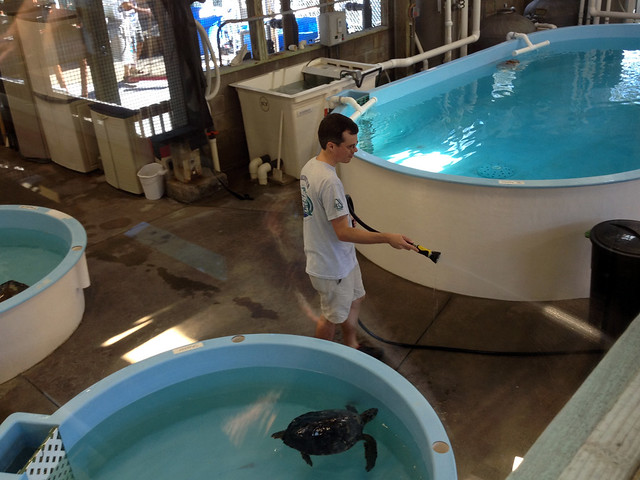
Arthur volunteering at MSC sea turtle rehab (prior to Zee’s arrival)
Arthur took photos of Zee during her rehab. She was cleaned up and given care and nutritious food. She ate like a champ from the beginning, which was a very good sign.
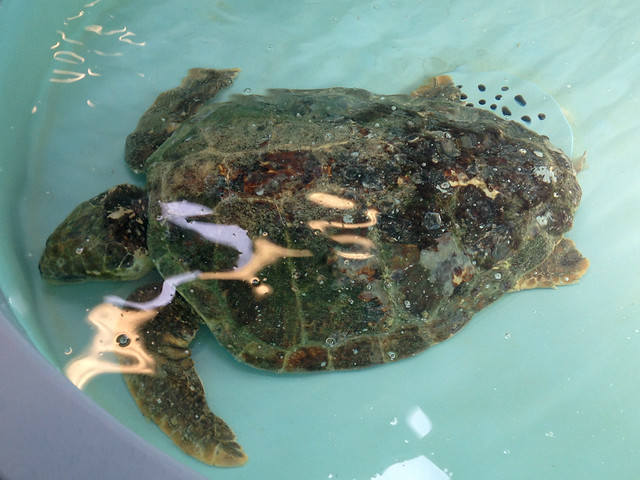
Zee on May 11th, photo by Arthur de Wolf
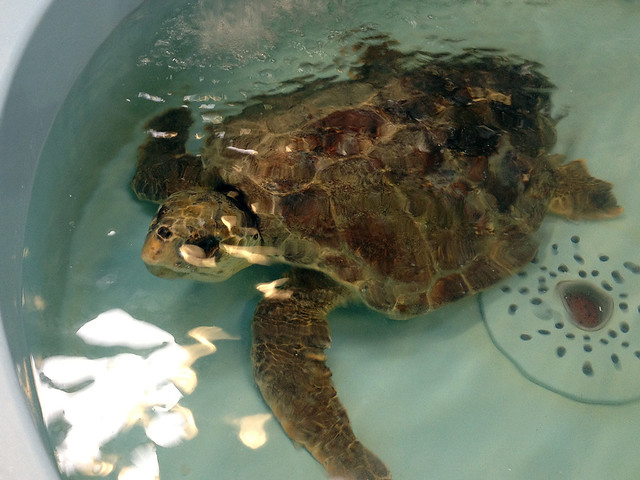
Zee on May 29th, photo by Arthur de Wolf
We last saw her on July 10th. Arthur volunteered that day and I came along to visit the Marine Science Center.
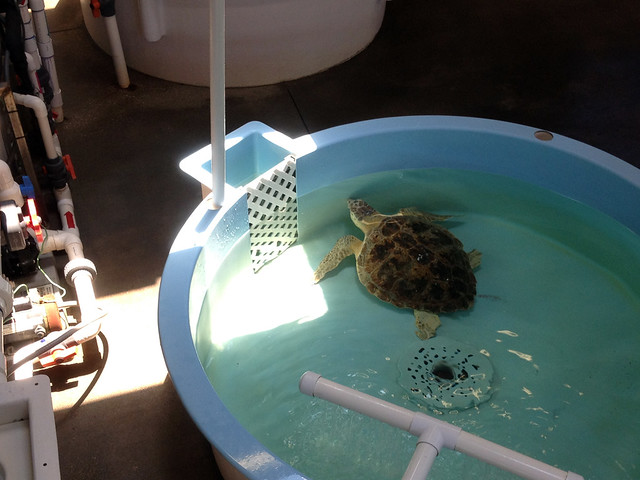
Zee on July 10th
Zee on July 10th
After some months in rehab, Zee was determined healthy enough for release. She gained 18 pounds and was ready to go, along with two other smaller Loggerheads. MSC announced the August 6 release to the public. And the public showed up!
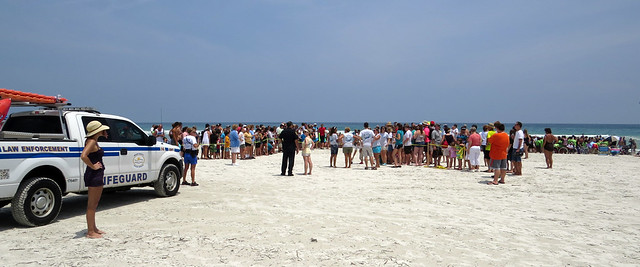


Just after 1PM, the guests of honor arrived in two vehicles. Seymour and Parker, 55 pounds and 85 pounds, respectively, came together. Big Zee got her own ride.

The releases were awesome. It was so great to hear the crowd cheer when the turtles came out and made their way back to the ocean. People were especially impressed with Zee, as she was so much larger than the others. I have a few photos and a video to share, but I was mostly watching, so I don’t have great footage of everything. At the end of this post I will share some links to media sites with their coverage of the event.
Seymour was up first; you’ll see him in the video at the end of this post. Seymour was found by Beach Patrol, so he was carried out by four Beach Patrol volunteers.
Next came Parker, who was carried out by MSC volunteers. Like Seymour, Parker was carried out in a sling. He was set down close to the waterline and the sling was removed.
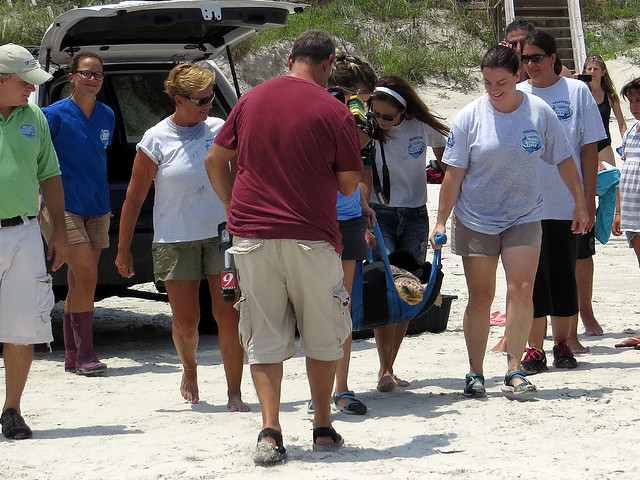

Finally, it was Zee’s turn. Staff and volunteers, including Arthur, carried her to sea.
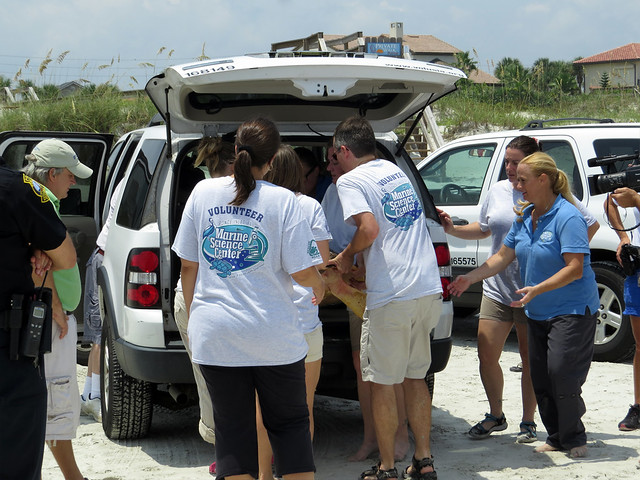
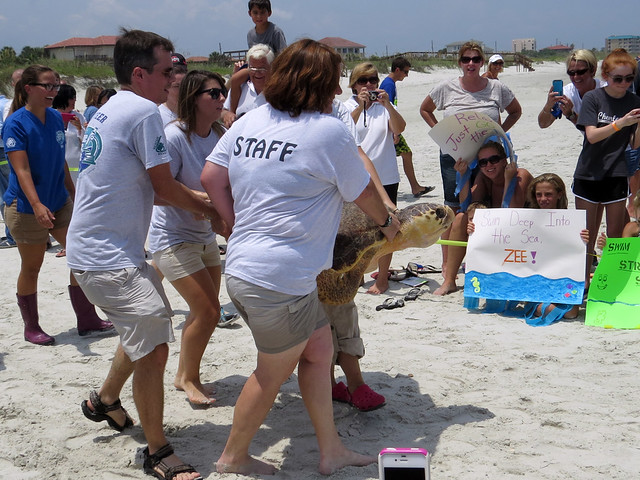
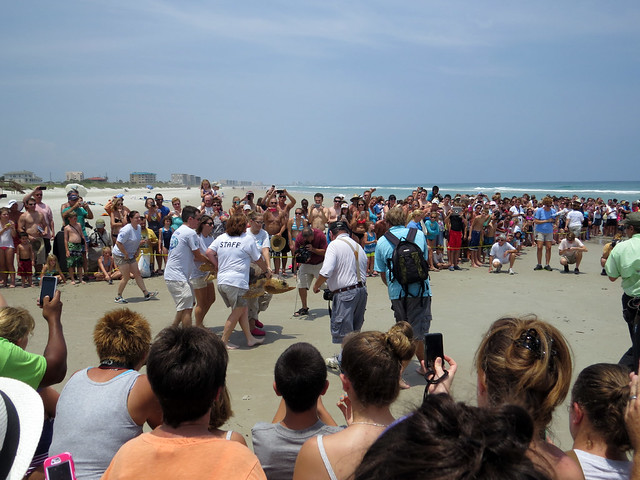
After she entered the water, the crowd began to disperse. Those who kept watching were treated to several great looks at Zee surfacing for a breath.

Good luck, beautiful Zee!
Here is a video compilation of the releases.
Here is a video of Zee’s release posted to YouTube by spectator “OsloShag”:
“Zee” Loggerhead Sea Turtle Release 08-06-13 copyright YouTube user OsloShag
It was awesome to be able to see Zee return to where she belongs. She is a sub-adult, meaning she is not yet sexually mature. When she is ready, she will come back to the ocean close to where she was hatched and find a mate. Good luck, Zee, Parker, and Seymour!
Links to coverage of the release:
Ormond Beach Observer (pre-release)
Daytona Beach News-Journal (pre-)
NSB Observer (pre-)
WNDB (pre-)
WESH (post-release)
Daytona Beach News-Journal (post-)
Florida Family Nature [blog] (post-)
MSC Facebook album (post-)
Ocean Advocate [blog] (post-)
Marine Science Center press release with photos
Sea Turtle Release Facebook album
Video segment on Volusia Magazine TV show
If I find more coverage I will add links here.
Share the birds, share the love!
